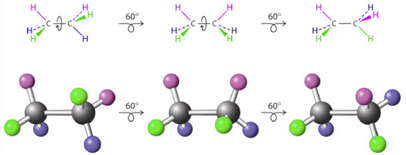What is the Large Hadron Collider? The Large Hadron Collider (LHC) is a marvel of modern particle physics. It allowed researchers to delve into the depths of our reality. Its origins date back to 1977.
During this period, John Adams, former director of the European Organization for Nuclear Research (CERN), suggested building a underground tunnel that could accommodate a particle accelerator capable of reaching extraordinarily high energies. tall.
see more
A new perspective: NASA releases 3D images of distant galaxies
Harvard professor believes he has found fragments of technology…
The project was officially approved twenty years later, in 1997. Construction began on a 27-kilometer ring. It passed under the Franco-Swiss border and was capable of accelerating particles up to 99.99% of the speed of light and crushing them.
Inside the ring, 9,300 magnets guide packets of charged particles in two opposite directions at a rate of 11,245 times per second, finally bringing them together for a head-on collision. The facility is capable of creating around 600 million collisions every second.
This causes incredible amounts of energy and, every now and then, the discovery of an exotic, never-before-seen heavy particle. The LHC operates at energies 6.5 times higher than the previous particle accelerator.
Construction
The LHC cost a total of US$8 billion, of which US$531 million came from the United States. More than 8,000 scientists from 60 different countries collaborate on their experiments. The accelerator turned on its beams on September 10, 2008. It collided particles with only ten millionths of their original design intensity.
initial concerns
Before it began operations, some feared that the new atom smasher would destroy the Earth. The concern was the emergence of an all-consuming black hole. But any reputable physicist would declare such concerns to be unfounded.
"The LHC is safe, and any suggestion that it might pose a risk is pure fiction," CERN Director General Robert Aymar told LiveScience in the past.
This is not to say that the facility could not be harmful if used improperly.
innovative research
On July 4, 2012, the scientific world watched with anticipation as researchers at the LHC announced the discovery of the Higgs boson. He was the final piece of the puzzle in a five-decade-old theory called the Standard Model of Physics.
The Standard Model attempts to explain all known particles and forces (except gravity) and their interactions. In 1964, British physicist Peter Higgs wrote a paper on the particle that now bears his name. In it, it was explained how mass arises in the universe.
Disabled
The LHC was decommissioned in December 2018 to undergo two years of upgrades and repairs. When online, you can smash atoms with a slight energy boost, but with twice the number of collisions per second.


